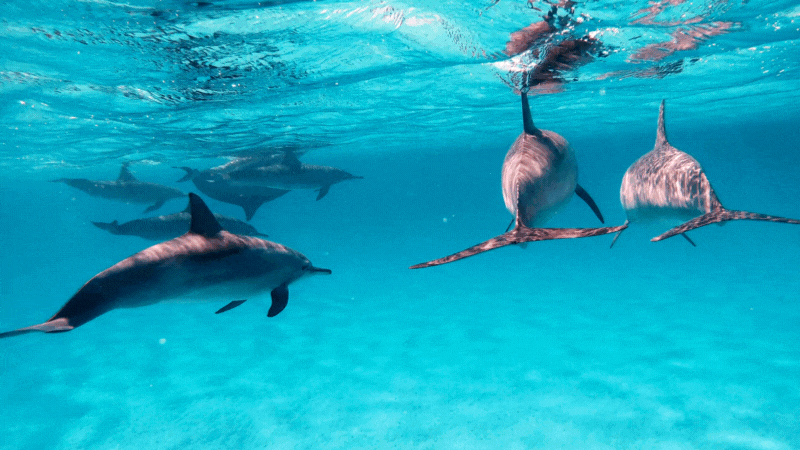In the first week of March 2013, the Convention on International Trade in Endangered Species of Fauna and Flora came to an agreement about new species that needed to be added to the database of endangered and critically endangered animals. This list, already thirty thousand species long, now contains several species of dolphins that a few decades ago flourished in the wild.
The reasons that dolphins are becoming very close to extinct animals are many — though nearly all the factors come back to human activity — because these close cousins to whales live in many different environments across the earth, including both fresh and saltwater.
To Catch a Fish
Human activity is responsible for both endangered fish and the endangered sea mammals who rely on a specific source of food. By far the largest threat that faces ocean wildlife, including all predatory large mammals like dolphins and whales, is the overfishing of the seas.
Nylon fishing nets that are used to pry huge quantities of cod, tuna, mackerel, salmon, and crabs from out of the sea and off the ocean floor cause dolphins to become entangled, where they cannot escape and drown. Despite efforts by wildlife conservation practices to create nets that allow dolphins to escape while fish remain in place, the populations of these cetaceans have been decimated.
Species like the New Zealand Maui’s dolphins have less than one hundred individuals to their name. Other species that are not rare animals, such as the bottlenose dolphin, are declining annually at rates of about six percent per year.
In Rivers and Seas
When people think about dolphins, they may not often think that direct human interaction can be a problem, since the open oceans are wide enough for any dolphin to live happily. Some endangered dolphins, however, live much closer to human populations than you would think.
The blind Indus river dolphin, for instance, only lives in the large Indus river that flows through Pakistan. This river is relied upon by the country to supply everything from drinking water to power to waste disposal, meaning that the habitat of river dolphins is drained or dammed or saturated with toxic chemicals. Since the Indus dolphin is an endemic species — it is found only in this river, nowhere else on Earth — it cannot survive in other rivers due to food options and water pH.
Likewise, the Hector’s dolphins that are native to Australia live only in select areas of the Pacific ocean coast, areas that are prone to boat strikes, fishing, and underwater mining.
Efforts To Save The Species
On an individual level, the best way to save the animals like dolphins that are threatened by fishing is to consume fewer commercially-fished products. This includes everything from the fish filets that you would purchase at a grocery store to the meals that you eat at a seafood restaurant. Since tuna fishing in particular is extremely hazardous to dolphin populations, minimizing or eliminating your intake of tuna (whether it is in tins or in sushi) is the best method of ensuring the health of a species.
For any person who lives in a coastal area where dolphins live, migrate, feed, or breed, they can help by refraining from sailing high-speed motor boats through shallow ocean areas where dolphins are likely to get hit.
Organizations like the World Wildlife Fund or the Nature Conservancy attempt to keep the endangered species of the planet alive and in a pristine environment, so donations or volunteer work can assist in the long-term survival of not only dolphins but also many other critically endangered species around the world.


